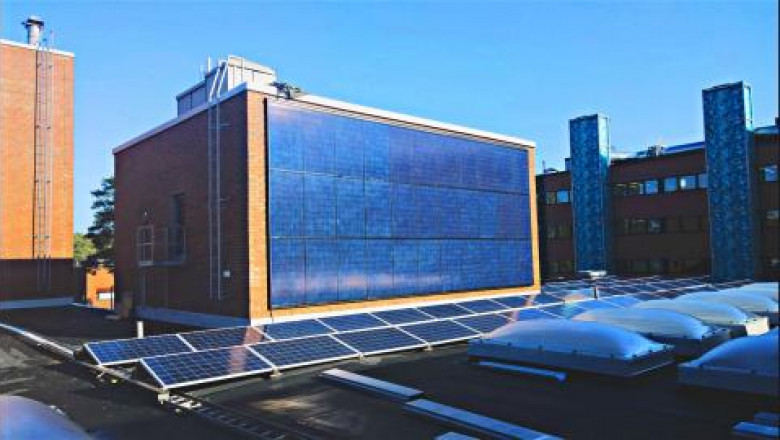views
Making Solar Energy More Appealing and Accessible
BIPV refers to the integration of solar panels into the construction of buildings as conventional building materials like tiles or windows. Instead of standalone solar panels on the roof or ground near a building, BIPV systems work seamlessly with the building’s architecture.
Advantages of BIPV Systems
Aesthetics and Design Flexibility
One of the main benefits of Building Integrated Photovoltaics is improved aesthetics. Solar panels can be designed to match the look of a building’s roof, walls, windows, or other features. This makes them less obtrusive compared to standard solar panels isolated on a roof. BIPV systems allow for more creative freedom in architectural design since solar elements become an integrated part of the building’s appearance.
Lower Costs
The upfront capital cost of installing BIPV systems is generally lower than conventional rooftop solar since the solar components substitute conventional building materials. Additional savings come from not needing mounting equipment, wiring, or other supporting structures for standalone panels. Over the long run, BIPV systems have lower maintenance needs and costs than standard rooftop solar as well.
Higher Energy Yields
Since BIPV components are integrated within the building envelope, they avoid the efficiency losses from shade, dust, snow, or weather that plague traditional rooftop panels. BIPV modules have access to direct sunlight for longer periods each day, resulting in up to 25% higher energy yields over their lifetime compared to rooftop systems in similar climates.
Additional Building Functions
Besides power generation, BIPV systems provide extra functionality. For example, BIPV windows admit daylight while generating electricity. BIPV roof and walls serve as building enclosures while harnessing the sun’s energy. This dual-functionality streamlines construction processes and reduces material needs.
Widespread Applications of BIPV
The versatility of BIPV allows its use in many building types across both new construction and renovations. Some successful applications include:
Commercial Buildings
Large retail stores, office buildings, and other commercial structures implement BIPV extensively on rooftops and facades. Major brands like IKEA and Walmart have installed BIPV on a massive scale to meet sustainability and energy goals.
Residential Buildings
Houses, apartments, and community housing employ BIPV in creative ways. Solar shingles and tiles, sunlight-harvesting skylights, and photovoltaic windows power individual homes and entire neighborhoods.
Infrastructure
Mass-transit stations, highways, bridges, and other public works feature BIPV applications. Solar canopies provide shelter while generating renewable electricity to power amenities.
Heritage Buildings
Even historically protected structures incorporate subtle BIPV designs. Solar elements respectfully blend with classic architectural styles to lower energy bills without compromising character.
BIPV Challenges and Growth Potential
While gaining popularity, some challenges still curb the widespread use of BIPV worldwide. Higher initial costs remain a barrier, though prices continue decreasing annually as technologies mature. Complex permits and regulations in some jurisdictions also slow adoption rates.
However, with further cost reductions and policy support, the BIPV market is projected to experience exponential growth in the coming decades. The global BIPV market size is estimated to rise from $4 billion in 2019 to over $35 billion by 2028. As solar panels become even lighter, more flexible and efficient, virtually any building component could potentially harvest the sun's energy. BIPV promises to significantly increase the share of buildings powering themselves with integrated solar solutions. With its advantages of aesthetics, energy yields and lower lifetime costs, BIPV could ultimately become the default approach to solar for both new construction and renovations worldwide.
Get More Insights On - Building Integrated Photovoltaics
Get this Report in Japanese Language:
Get this Report in Korean Language:
Resource –
Recent Developments in Building Integrated Photovoltaics Market
About Author:
Money Singh is a seasoned content writer with over four years of experience in the market research sector. Her expertise spans various industries, including food and beverages, biotechnology, chemical and materials, defense and aerospace, consumer goods, etc. (https://www.linkedin.com/in/money-singh-590844163)






















Comments
0 comment